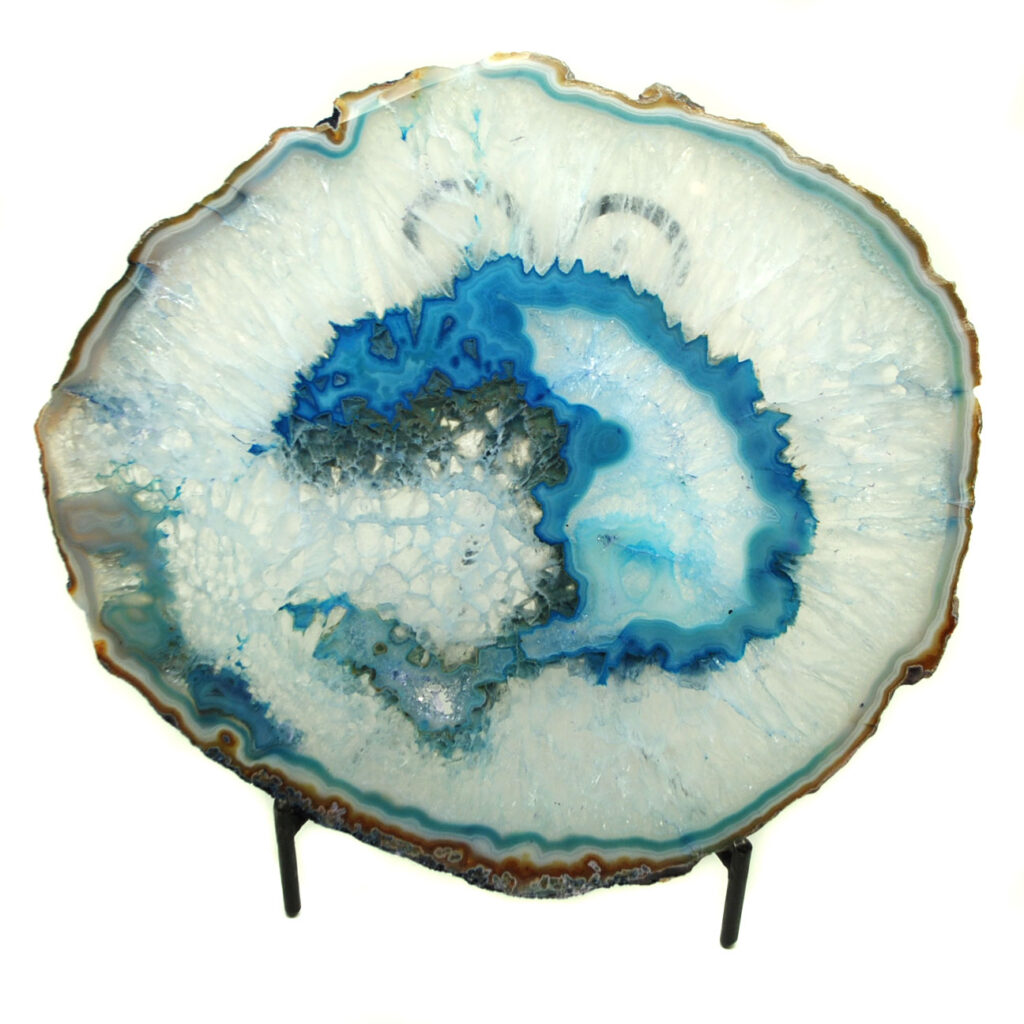Agate Slabs Can Be Fun For Everyone
Table of ContentsOur Agate Slabs StatementsThe Main Principles Of Agate Slabs Agate Slabs - The Facts4 Easy Facts About Agate Slabs ExplainedAll about Agate SlabsAll About Agate Slabs
The banding is one of the most particular noticeable home of agates. It is primarily a result of periodic adjustments in the clarity of the agate substance - layers show up darker when they are a lot more transparent (this may appear reversed in transmitted light) - Agate Slabs. This effect may be accompanied as well as intensified by adjustments in the shade of bordering layers.The thickness of the individual layers varies significantly in different agate specimen. Two types of banding are typically differentiated in agates: In the majority of agates the wall-lining banding controls, and in numerous samplings it is the only kind of banding.
Agate Slabs - Questions
The evident density of a layer depends on the orientation of the cut and differs in a cross area. If one takes this right into account, in lots of agates the layers are spaced evenly as well as specific layers stay their thickness throughout the entire sampling. It ought to be worried that there is no "guideline of equidistance of the layers", as there stand out examples of agates in which the thickness of the layers varies greatly (as an example, "Limpopo agates" from Botswana).
In this area of the specimen the wall-lining layers are homogeneously tinted and also spaced quite evently. By contrast, the horizontal layers look much extra diverse: some layers show up granular and much less clear, one can acknowledge two areas made of quartz crystals (discover the intense reflections), one layer is tinted orange, as well as in the top part there is a location with surge banding.
The Best Strategy To Use For Agate Slabs

This band is normally slim and frequently does not show any finer banding. It is even existing in several Uruguay agates that otherwise lack any kind of wall-lining banding. The architectural peculiarities of these bands indicate that the agate development is not a constant procedure, but includes a number of steps. Animportant, yet well concealed feature of agates is their coarse framework.
Unknown Facts About Agate Slabs
They are arranged in groups of roughly parallely oriented crystals, and also these teams create "fibers". This is not our website a special attribute Your Domain Name of agates, the fibrous structure is likewise located in botryoidal chalcedony. Under typical scenarios these fibers are undetectable, as they are all made from the exact same material and also the optical homes of the fibers are practically the same.
It is crucial to keep in mind that the lines originate from the wall surface and also not from the facility, this can best be seen in the left corner of the sampling where several groups of lines emit from specific places at the wall. The pattern is rather solid in the perimeter, however it is likewise present near the facility made of quartz crystals.
Getting My Agate Slabs To Work

It is not feasible to comprehend what characterizes an agate as well as if as well as exactly how it differs from various other cryptocrystalline quartz selections without studying agate thin areas with a polarizing microscopic lense. However, regardless of their tremendous educational worth one barely ever before sees photos of agate thin sections in collection agencies' magazines. The physics underlying the method is rather tough to comprehend and will be described in a chapter of its own, right here I can only offer a short explanation.
Little Known Facts About Agate Slabs.

The interference shades are normally examined in so called thin areas, extremely slim slices of minerals as well as rocks glued onto a glass slide for microscopy. One can attempt to use thicker pieces, however the analysis of the observed shades gets more and also extra tough, and also several rocks as well as minerals have to be extremely slim to allow adequate light through.